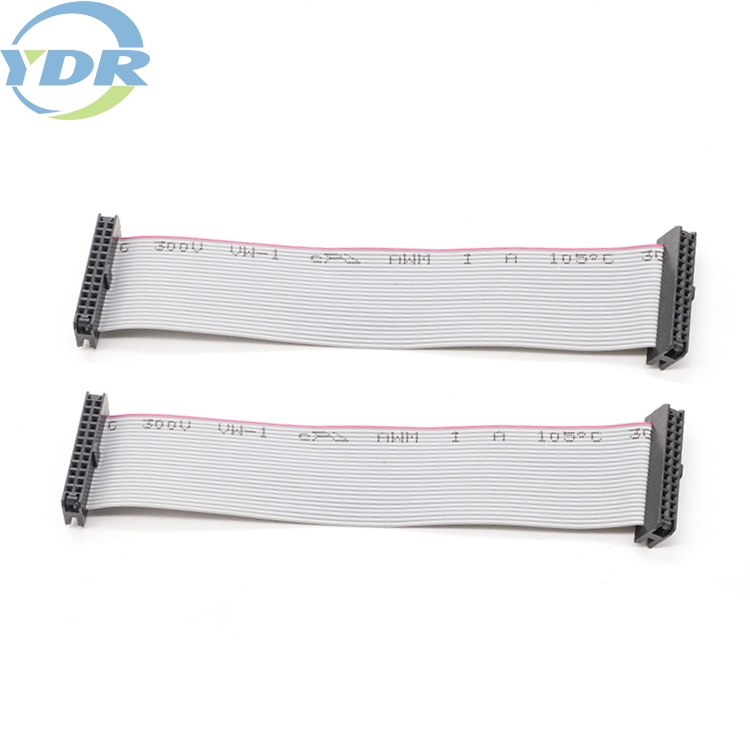The intricate world of electronics relies on a complex network of connections to function. Among these connections, a vital but often unnoticed player emerges: the IDC cable, also known as an Insulation-Displacement Connector cable.
What Exactly is an IDC Cable?
An IDC cable is a flat ribbon cable equipped with a series of IDC connectors at predetermined intervals. These connectors are designed to pierce the insulation of flat ribbon cables, establishing a reliable electrical connection without the need for soldering or crimping. This unique design makes IDC cables a fast, efficient, and cost-effective solution for various electronic applications.
The Anatomy of an IDC Cable:
Flat Ribbon Cable: The core of the IDC cable is a thin, flat cable typically composed of multiple insulated conductors. These conductors carry electrical signals between connected devices.
IDC Connectors: At regular intervals along the cable, IDC connectors are positioned. These connectors consist of a housing and a sharp blade that penetrates the insulation of the ribbon cable during the termination process.
The Benefits of Using IDC Cables:
Fast and Easy Termination: Terminating IDC cables is a relatively simple process compared to soldering or crimping. This translates to faster assembly times and reduced production costs.
Reliable Connections: The IDC connector's piercing mechanism creates a gas-tight connection with the conductor, ensuring reliable signal transmission.
Cost-Effective Solution: The simple design and ease of use make IDC cables a cost-effective choice for various applications.
Space-Saving Design: The flat profile of IDC cables allows for efficient use of space within electronic devices.
Versatility: IDC cables come in a variety of configurations with different numbers of conductors and connector types, catering to diverse electronic needs.
Where Do We Find IDC Cables?
Due to their numerous advantages, IDC cables find application in a wide range of electronic devices and systems:
Computer Systems: Flat ribbon cables with IDC connectors are commonly used to connect internal components like hard drives, floppy drives, and optical drives to the motherboard.
Telecommunication Equipment: IDC cables play a crucial role in connecting various components within telephone systems and other telecommunication equipment.
Consumer Electronics: From DVD players to game consoles, IDC cables provide essential connections within various consumer electronics devices.
Industrial Applications: In industrial control systems and factory automation equipment, IDC cables offer reliable and space-saving connections.
While newer technologies are emerging, IDC cables remain a relevant and reliable solution for various electronic applications. As the demand for miniaturization and faster assembly times continues to grow, advancements in IDC connector design and materials can further enhance their performance and longevity.
In conclusion, the next time you use an electronic device, take a moment to appreciate the silent hero within – the IDC cable. Its simple yet effective design ensures reliable connections, making it a cornerstone of the electronic world.

 English
English  Español
Español  Português
Português  русский
русский  Français
Français  日本語
日本語  Deutsch
Deutsch  tiếng Việt
tiếng Việt  Italiano
Italiano  Nederlands
Nederlands  ภาษาไทย
ภาษาไทย  Polski
Polski  한국어
한국어  Svenska
Svenska  magyar
magyar  Malay
Malay  বাংলা ভাষার
বাংলা ভাষার  Dansk
Dansk  Suomi
Suomi  हिन्दी
हिन्दी  Pilipino
Pilipino  Türkçe
Türkçe  Gaeilge
Gaeilge  العربية
العربية  Indonesia
Indonesia  Norsk
Norsk  تمل
تمل  český
český  ελληνικά
ελληνικά  український
український  Javanese
Javanese  فارسی
فارسی  தமிழ்
தமிழ்  తెలుగు
తెలుగు  नेपाली
नेपाली  Burmese
Burmese  български
български  ລາວ
ລາວ  Latine
Latine  Қазақша
Қазақша  Euskal
Euskal  Azərbaycan
Azərbaycan  Slovenský jazyk
Slovenský jazyk  Македонски
Македонски  Lietuvos
Lietuvos  Eesti Keel
Eesti Keel  Română
Română  Slovenski
Slovenski  मराठी
मराठी  Srpski језик
Srpski језик 





